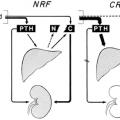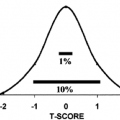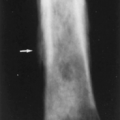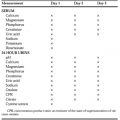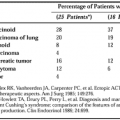PARATHYROID CARCINOMA
Hyperparathyroidism caused by parathyroid carcinoma is rare; the reported incidence is from 0.5% to 4% (see Chap. 48 and Chap. 58). This diagnosis should be suspected when (a) a palpable neck mass is present, (b) the serum calcium level exceeds 14 mg/dL, (c) the serum PTH level is markedly elevated, and (d) a previously unoperated patient is hoarse from a recurrent laryngeal nerve invasion. At surgery, parathyroid carcinomas appear white and very firm, unlike adenomas, which are reddish brown and soft. The initial operation must be aggressive yet meticulous, with en bloc resection of the parathyroid tumor and all adjacent invaded tissues, including the ipsilateral thyroid lobe. Care must be taken not to rupture the capsule and spill the tumor. Radical neck dissection is reserved for patients with clinically overt cervical node metastases. Distinguishing early parathyroid carcinoma from atypical parathyroid adenoma by histologic and clinical criteria may be difficult. In these cases, DNA cytometry can be helpful, because an aneuploid pattern and higher nuclear DNA content are typical of carcinomas but not of adenomas. For recurrent disease, repeated resection of local cervical implants and distant metastases is important in palliative management. Tumor recurrence is generally apparent within 6 months to 3 years of surgery and may denote an incurable process. However, select patients appear to benefit greatly from re-resection of locally recurrent tumors.
Stay updated, free articles. Join our Telegram channel

Full access? Get Clinical Tree


